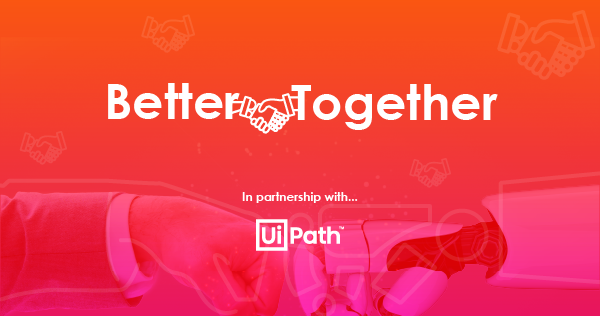What is level 1, 2 & 3 IT support and what support do you need?
Understanding IT support levels: What's right for your business?
IT support is the backbone of modern businesses, ensuring smooth operations and minimising disruptions. Whether you're a startup or an enterprise, having a structured IT support model with clearly defined help desk support tiers can drastically improve efficiency.
But what do Level 1, Level 2, and Level 3 IT support mean? How do they impact your business? And what level of IT support do you actually need?
Why IT support is critical for your business
A structured IT support team provides significant benefits, including:
- Improved response times – Faster resolution of technical issues enhances customer service.
- Reduced downtime – Quick troubleshooting minimises operational disruptions.
- Enhanced security and reliability – Protects data and IT infrastructure.
- Increased productivity – Internal teams can focus on core business functions.
As your organisation scales, managing IT complexity becomes a challenge. A managed IT service provider can streamline support functions, ensuring quick issue resolution and smooth business operations.

Where does level zero support fit in?
Before we break down Levels 1, 2, and 3 IT support, it’s worth mentioning Level Zero support—also known as self-service support.
This is the first line of defence, where users resolve common issues themselves, without needing human help desk intervention. It often includes:
- FAQs
- Knowledge bases
- Automated chatbots
When level zero works well:
- Finding a product serial number.
- Learning how to reset a modem.
- Checking software installation steps.
Level zero can reduce strain on IT teams—but human support remains vital when issues become more complex.
What are the different IT support levels?
| Support level | Primary focus | Key example tasks | Best for |
| Level 1(Tier 1) | Initial contact & basic troubleshooting | Password resets, service desk tickets, basic software issues | Small businesses needing quick fixes |
| Level 2 (Tier 2) | Technical problem-solving | Software configuration, escalated troubleshooting, system installations | SMBs needing deeper technical support |
| Level 3 (Tier 3) | Advanced infrastructure & system recovery | Server failures, network outages, data recovery | Enterprises with complex IT environments |
| Level 4 (External vendors) | Specialist external support | Vendor liaison, major system upgrades, proprietary software issues | Businesses relying on specialised applications |
Each level plays a unique role, ensuring issues are resolved efficiently and at the right level of expertise.
Let’s break these down in more detail.
What is level 1 IT support? The basics
Level 1 IT support is your help desk frontline, handling basic technical issues and providing initial troubleshooting.
Key level 1 IT support responsibilities & examples
At Level 1, the focus is on quick fixes and first-line problem solving:
- Handling service desk requests – Answering calls, emails, and ticket submissions.
- Resetting passwords – Helping employees regain access to systems.
- Basic troubleshooting – Fixing minor software issues and hardware glitches.
- Configuration challenges – Assisting with simple setup problems.
- Logging & escalating tickets – Handing unresolved issues to Level 2 support.
Typical level 1 examples include:
- Helping a user reset their password.
- Troubleshooting a software error that prevents a program from opening.
- Resolving a printer connectivity issue.
- Guiding someone through email setup.
Who needs level 1 IT support?
Startups and small businesses often rely heavily on Level 1 IT support to manage everyday IT issues without the need for in-house technical expertise.

What is level 2 IT support? A little more complex.
Level 2 IT support technicians step in when Level 1 support can’t resolve an issue. They offer a higher level of technical expertise, often specialising in specific systems.
Key Level 2 IT support responsibilities
- Resolving escalated issues: Investigating and fixing problems beyond basic troubleshooting.
- Software configuration: Installing and configuring business-critical applications.
- On-site or remote support: Diagnosing issues that require deeper technical knowledge.
Who needs level 2 IT support?
SMBs experiencing growth often require Level 2 support to handle more technical challenges, without having to build an entire in-house IT team.
What is level 3 IT support? The critical stuff.
When complex IT infrastructure issues arise—like network failures or cybersecurity incidents—Level 3 support specialists take charge.
Key level 3 IT support responsibilities
- System recovery & data issues: Resolving critical outages and managing data recovery.
- Network and infrastructure repairs: Addressing hardware failures, server issues, and data centre disruptions.
- IT strategy development: Supporting long-term IT planning and system improvements.
Typical level 3 examples include:
- Administration, network, and other infrastructure issues.
- Addressing data loss.
- Supporting with a major hardware failure.
Who needs level 3 IT support?
Large businesses and enterprises with complex IT systems benefit most from Level 3 support. This level reduces downtime and safeguards critical operations.
What is level four IT support? Third-party experts.
Level 4 support is external vendor support, called in when internal teams hit a wall. This is often the case for software bugs or specialist hardware failures.
Key level 4 IT support responsibilities
- Vendor collaboration: Liaising with external suppliers and manufacturers.
- Large-scale upgrades: Supporting major IT infrastructure updates and integrations.
- Specialist advisory: Providing expert consultation on vendor-specific solutions.
Level four IT support examples
- Coordinating with a software vendor to troubleshoot a complex licensing or performance issue.
- Working alongside a hardware supplier to diagnose and resolve a critical component failure.
- Advising on system architecture changes that depend on input from a third-party technology provider.
Who needs level 4 IT support?
Businesses using specialist systems—such as industry-specific software or custom hardware—rely on Level 4 support to maintain system integrity.

How to choose the right IT support level
Choosing the right help desk support structure depends on your business needs:
- Evaluate your IT complexity: Does your team need basic troubleshooting, or are you managing critical systems?
- Identify critical systems: Understand which systems are vital to your operations and require specialised support.
- Balance cost vs. Expertise: Outsourcing IT support is often more cost-effective than building an internal team.
- Plan for growth: Select an IT support model that scales with your business.
Setting up a tiered IT support structure
A tiered support model can streamline issue resolution and boost productivity:
- Define roles: Assign Level 1, 2, and 3 support responsibilities based on skill sets.
- Create escalation paths: Ensure critical issues reach experts quickly.
- Automate with service desk software: Use ticketing systems to track issues and response times.
- Invest in training: Keep support teams updated on IT best practices.
Key metrics when choosing an IT support provider
Selecting a managed IT provider? Consider these:
- Response times: Can they resolve Level 1 issues quickly?
- Escalation efficiency: How well do they handle Level 2 and Level 3 problems?
- Scalability: Can their support grow with your business needs?
- Customer satisfaction: Look for high CSAT scores—like The Missing Link’s 98%+ average.
And remember, delivering support with a smile is key to keeping your customers happy. If you don't have the right people or skills to handle support requests, you need to make changes so you can continue to offer the best experience possible. Nothing is more important than your customers feeling valued and satisfied.
Is your IT support optimised?
The right IT support levels can transform your operations—resolving technical issues faster, reducing downtime, and keeping your systems secure.
At The Missing Link, we provide tailored IT support solutions across Level 1, Level 2, and Level 3 support, ensuring your business stays productive and resilient.
Need expert IT support?
Contact The Missing Link today—let’s build a help desk that keeps your business moving forward.
If you liked this article, you may also like:
Enter a new era of cloud computing with Windows 365
Benefits of wireless networks for businesses
What role does Patch Management have in the future of remote work?
Other services...
Author
As a Content Marketing Specialist at The Missing Link, I turn technical insights into engaging stories that help businesses navigate the world of IT, cybersecurity, and automation. With a strong background in content strategy and digital marketing, I specialise in making complex topics accessible, relevant, and valuable to our audience. My passion for storytelling is driven by a belief that great content connects, educates, and inspires. When I’m not crafting compelling narratives, I’m exploring new cultures, diving into literature, or seeking out the next great culinary experience.


-Sep-07-2022-04-37-21-38-AM.png?width=1200&length=1200&name=MicrosoftTeams-image%20(1)-Sep-07-2022-04-37-21-38-AM.png)